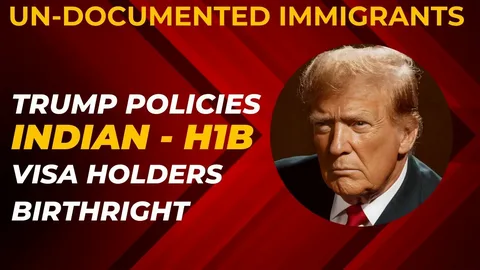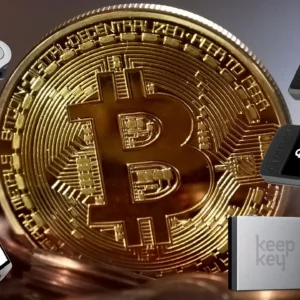Interest rates are one of the most critical factors influencing economic growth, investment, and consumer spending. They affect everything from mortgage rates to business loans, shaping financial stability on both personal and national levels. Given this significance, the question arises: Can Trump’s Policies Really Lower Interest Rates?
During Donald Trump’s presidency, his administration pursued a range of economic policies designed to boost growth, cut taxes, and deregulate industries. But did these measures have a direct impact on interest rates? And if so, were they successful in keeping them low?
In this article, we will explore how Trump’s policies influenced it, the role of the Federal Reserve, and whether his administration’s economic strategies truly led to lower borrowing costs.

Trump’s Economic Policies: An Overview
To understand whether Trump’s policies really lowered interest rates, it’s important to examine his overall economic strategy. His administration focused on several key economic principles:
- Tax Cuts and Jobs Act (TCJA) of 2017 – This was the most significant tax reform in decades, designed to lower corporate tax rates and stimulate business investment.
- Deregulation – Trump aggressively rolled back financial and environmental regulations, arguing that excessive regulation stifled economic growth.
- Trade Policies – His administration engaged in a trade war with China, imposing tariffs on billions of dollars’ worth of goods.
- Spending Policies – Increased government spending on defense and infrastructure contributed to higher budget deficits.
These policies were aimed at fueling economic expansion, but how did they interact with it ? Let’s analyze their impact.
The Federal Reserve’s Role: Did Trump’s Policies Influence Interest Rate Decisions?
One key factor to consider when assessing whether Trump’s policies really lowered interest rates is the Federal Reserve’s independence. The Fed sets the benchmark interest rate based on economic conditions, inflation, and employment levels.
Trump vs. The Federal Reserve
Throughout his presidency, Trump frequently criticized the Fed for not keeping interest rates low. He argued that higher rates would slow economic growth and disadvantage the U.S. in global markets.
However, the Fed operates independently of the White House. Under Jerome Powell’s leadership, the central bank adjusted interest rates based on economic data rather than political pressure. During Trump’s first two years in office (2017-2018), the Fed raised rates multiple times, citing strong economic growth and fears of inflation. But by mid-2019, economic uncertainties—partially due to Trump’s trade policies—prompted the Fed to cut rates.
Thus, while Trump’s policies may have indirectly influenced interest rates, it was ultimately the Fed that made the key decisions.
Tax Cuts, Economic Growth, and Their Effect on Interest Rates
One of Trump’s biggest economic moves was the Tax Cuts and Jobs Act (TCJA) of 2017. By reducing corporate tax rates from 35% to 21% and cutting personal income taxes, the administration aimed to stimulate investment and consumer spending.
Did Tax Cuts Lead to Lower Interest Rates?
In theory, tax cuts can influence interest rates in multiple ways:
- Boosting Economic Growth – Lower taxes can lead to higher consumer spending and corporate investment, increasing demand for credit.
- Rising Government Debt – The tax cuts contributed to a larger budget deficit, which the government financed through increased borrowing. More borrowing can push it higher.
- Inflation Concerns – If tax cuts lead to excessive spending and economic overheating, the Fed may respond by raising interest rates to prevent inflation.
In reality, the TCJA initially contributed to higher interest rates. Economic growth surged in 2018, prompting the Fed to hike rates several times. However, by 2019, as concerns over trade wars and slowing global growth emerged, the Fed reversed course and began cutting rates again.
Thus, while Trump’s tax cuts stimulated the economy, their immediate effect did not really lower interest rates. Instead, rates rose before eventually being lowered due to external factors.
Trade Wars and Their Unintended Impact on Interest Rates
Trump’s trade policies, particularly his tariff war with China, introduced uncertainty into the global economy. Tariffs raised costs for businesses and consumers, leading to market volatility.
How Trade Policies Affected Interest Rates
- Increased Economic Uncertainty – Businesses faced uncertainty over supply chains and costs, making them hesitant to invest.
- Lower Business Confidence – Reduced investment often leads to lower borrowing demand, which can push interest rates downward.
- Stock Market Volatility – Financial markets reacted negatively to trade tensions, prompting the Fed to take measures to stabilize the economy.
By mid-2019, these factors contributed to the Fed’s decision to cut interest rates. While Trump’s trade policies created economic headwinds, they indirectly contributed to lower rates—but not necessarily in a positive way.
COVID-19 and the Unprecedented Drop in Interest Rates
The biggest shift in interest rates during Trump’s presidency came in 2020, when the COVID-19 pandemic triggered an economic crisis.
The Fed’s Emergency Response
- In March 2020, the Fed slashed rates to near zero to counter the economic downturn.
- The Trump administration launched massive stimulus packages, including direct payments to Americans and business loans.
- Treasury yields dropped as investors sought safe-haven assets.
In this case, Trump’s policies did coincide with lower interest rates, but the primary driver was the pandemic rather than any specific economic strategy. The need to prevent an economic collapse forced the Fed to take drastic action, leading to historically low borrowing costs.
Conclusion: Did Trump’s Policies Really Lower Interest Rates?
So, did Trump’s policies really lower interest rates? The answer is complex.
- Trump’s tax cuts and deregulation boosted short-term economic growth, leading to higher rates in 2018.
- His trade policies and economic uncertainty contributed to a Fed pivot in 2019, resulting in lower rates.
- The COVID-19 pandemic was the biggest driver of ultra-low rates, rather than any specific Trump policy.
While Trump often advocated for lower rates, the actual movements were primarily driven by external factors and Federal Reserve decisions.
What do you think? Did Trump’s policies have a real impact on interest rates, or were they merely coincidental? Leave a comment below and share your thoughts!






